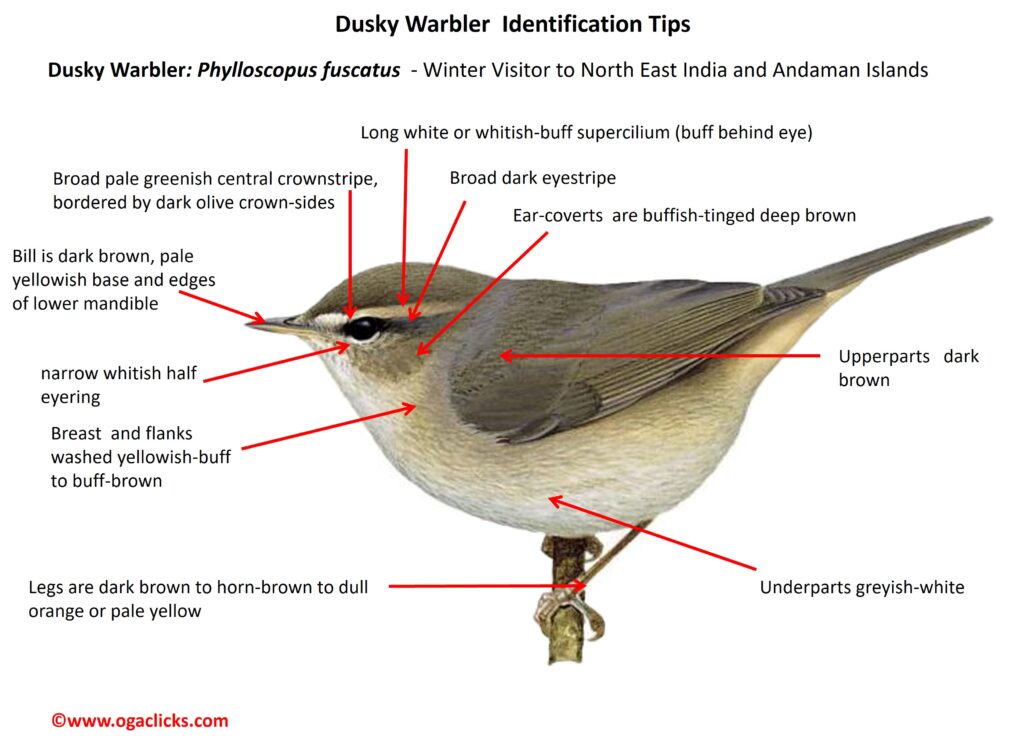
Dusky Warbler Phylloscopus fuscatus
Etymology:
- Phylloscopus: Greek word phullon – leaf; skopos – seeker
- Fuscatus : Latin word for dark derived from fuscus –dark
Vernacular Names: Mar: Kalsar Vatvatya
Distribution: Winter Visitor to North East India and Andaman Islands.
Details: Size of 11–12 cm; wt.of 8·5–13·5 g. It is a medium-sized, slim, relatively short-tailed, and slender-billed warbler, mostly drab brown but with prominent supercilium. The nominate race has long white or whitish-buff supercilium (buff behind eye), broad dark brown or blackish eyestripe, buffish-tinged deep brown cheek and ear-coverts. It frequently shows narrow whitish eyering. The upperparts are dark brown (greyer when plumage worn), rump and uppertail-coverts are slightly paler; flight-feathers and tail feathers are finely edged same colour as upperparts. It is mostly cold greyish-white below, variably washed or tinged yellowish-buff to buff-brown, more heavily on flanks and undertail-coverts. The underwing-coverts are buff, tinged pinkish. The iris is dark brown; bill is dark brown, has pale yellowish base and edges of lower mandible; legs are variable, from dark brown to horn-brown to dull orange or pale yellow. Both the sexes are alike. The juvenile is like adult, but underparts washed with yellow.
Habitat: It breeds in scrub and low dense vegetation in taiga forest, mainly of larch and pine , in bushes and tall grass and thickets of willows and alders along streams, sedge-swamps and reed-swamps, and in floodplain meadows in marshy river valleys, in shrub layer or thickets of dwarf birch , in foothills and montane forest. It is found up to 4200 m. In non-breeding season it is found in foothills with scrub and open plains with low bushes, trees, edges of cultivation etc., frequently near water, also in mangroves.
Food habits: It eats insects like weevils and other small beetles, molluscs, small moths, and larvae. It also eats small seeds. It is usually solitary; may occur in small loose groups on passage and in winter. It is secretive; skulks in low dense vegetation or low branches of trees, where it feeds close to the ground; nervously and almost constantly flicks wings and tail. It forages mainly by searching for and taking insects from within vegetation, may make short darting flights after aerial insects.
Breeding habits: They breed in May to mid-Aug. They are single brooded & territorial. The nest is a ball of dry grasses and sedges, moss, plant fibres and feathers, placed on ground beneath willow scrub or shrub thicket in branches of small shrub or tree. They lay a clutch of 4–6 eggs.